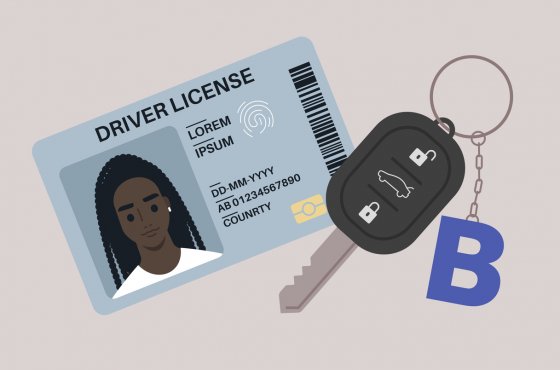Five steps to help you choose the best health insurance plan
We usually have a little time to choose the best health insurance plan for ourselves and our family, but rushing and choosing the wrong coverage can be costly. Nerdwallet I've written a quick guide to help you find affordable health insurance.

Photo: IStock
Medicine in the USA is private and prohibitively expensive. The state takes care of only the most vulnerable segments of the population, and even then, as a rule, not in full. Therefore, having health insurance is a vital issue.
Here are 5 steps to help you figure out which insurance policy will be best for you and your family.
Step 1. Select a health insurance platform
If your employer offers health insurance
Most people with health insurance get it through an employer. If your employer offers health insurance, you won't need to use insurance marketplaces unless you want to find an alternative plan. But marketplace plans are likely to cost more than plans offered by employers. This is because most employers pay a portion of the insurance premiums for their employees.
If your employer does not offer health insurance
Find the best plan from your state's online marketplace, if available, or from the federal marketplace. To get started, go to the website HealthCare.gov and enter your zip code. You will be sent to your state's marketplace, if available. Otherwise, you will use the federal site.
On the subject: Seven mysteries of health insurance in the USA, and how to solve them
You can also buy health insurance through a private marketplace or directly from an insurer. If you choose these options, you will not be eligible for insurance benefits, including tax credits.
Step 2: Compare Types of Health Insurance Plans
The most common types of health insurance policies are HMO, PPO, EPO, and POS plans.
HMO: health maintenance organization
This plan has low out-of-pocket costs and a primary care physician to coordinate your care, but a fairly narrow network of doctors and hospitals. You need to stay online to get coverage (except for emergencies). In this regard, you need referrals from your doctor (referral).
PPO: preferred provider organization
In this regard, the network is wider and referral is not necessary, but out-of-pocket costs are higher. You may not stay in-network, but in-network treatment is cheaper.
EPO: exclusive provider organization
Lower out-of-pocket costs and lack of mandatory referrals, but less freedom to choose suppliers. You need to stay online to get coverage (except for emergencies).
POS: point of service plan
A broad network of providers and a primary care physician who coordinates your care. In this regard, you need referrals from your doctor (referral).
Read the benefits summary
Marketplaces usually provide a link to a brief description of the policy (summary of benefits), which explains all of the plan's costs and coverage. There should also be a provider directory available that lists the doctors and clinics in the plan's network. If you are covered by your employer, ask your workplace administrator for a summary of available plans.
Assess your family's medical needs
Look at the amount and type of treatment you have received in the past. While it's impossible to predict all medical costs, knowing the trends can help you make an informed decision.
Consider whether you want to use a referral health care delivery system
The referral system (from the English referral - “referral”) is a treatment that includes referring the patient from the attending physician to a highly specialized specialist (either to a private specialist, for example, to a surgeon, or to a highly specialized clinic).
Plans requiring direction
If you choose an HMO or POS plan that requires a referral, you generally need to see your primary care physician before scheduling a procedure or seeing a specialist.
Like the article? Support ForumDaily!?
Because of this requirement, many people prefer other plans. However, by limiting your choices to the providers they contract with, HMOs tend to be the cheapest type of health insurance plan.
The benefit of HMO and POS plans is that your overall health care is managed by one primary physician, which can lead to a better understanding of your needs and continuity of medical records. If you choose a POS plan and go out of network, be sure to get a doctor's referral in advance to reduce out-of-pocket costs. You cannot leave the HMO network unless it is an emergency.
Plans that do not require direction
If you prefer to see specialists without a referral, an EPO or PPO may be better for you. EPO usually does not require a referral, but there are exceptions, so read the fine print. A PPO may be better if you live in a remote or rural area with limited access to doctors and medical care, since you may be forced out of the provider network.
HDHP with HSA
A health savings account (HSA) is a type of personal savings account you can open to pay for certain health care expenses.
An HSA allows you to save money and withdraw it tax-free as long as you use it to cover certain medical expenses, such as deductibles, copayments, coinsurance and more.
An HDHP (high deductible health plan) can be any of the above types of health insurance—HMO, PPO, EPO, or POS—but it follows certain rules to be eligible for an HSA.
These HDHPs typically have lower premiums, but you pay higher out-of-pocket costs, especially at first. These are the only plans that qualify you to open a health savings account, or HSA, which is a tax-advantaged account you can use to pay for health care expenses. If you're interested in such an arrangement, be sure to learn the ins and outs of HSAs and HDHPs first.
Step 3: Compare Health Plan Networks
Your health insurance “network” is the health care providers and facilities with which your health plan contracts to provide your care.
Why network matters
Costs are lower when you see an in-network doctor because insurance companies negotiate lower rates with in-network providers. When you go out of network, these doctors do not have negotiated rates and you tend to pay more.
Do you have any preferred doctors?
If you want to continue using your current health care providers, make sure they are listed in the provider directories of the plan you are considering. You can also ask your doctors directly whether they accept a particular health insurance plan.
Is a large network important?
If you don't have a preferred doctor, it may be worth looking for a plan with a broad network of services so you have more choices. A wider network is especially important if you live in a rural area, as it will give you a better chance of finding a local doctor who will accept your plan.
If possible, eliminate any plans that don't have local in-network doctors. You can also exclude those plans that have very few provider options compared to other plans.
Step 4: Compare Actual Costs
Another key factor is out-of-pocket expenses (that is, expenses other than the monthly premium). The plan summary should clearly state how much you will have to pay out of pocket for services.
Read the terms and conditions of health insurance
It's helpful to know the definitions of some key health insurance terms:
- Copayment (Copay): This is a flat fee (for example, $20) that you pay each time you receive a medical service or procedure.
- Coinsurance: This is the percentage (for example, 20%) of medical expenses that you pay. The rest is covered by your health insurance plan.
- Deductible: This is the amount you pay for covered health care before your insurance starts paying.
- Out-of-pocket maximum: This is the maximum amount you will pay out of pocket in one year for covered health care. Once you reach this maximum, your insurance will pay the rest.
- Out-of-pocket costs: These are all costs that exceed your premium, including copays, coinsurance, and deductibles.
- Premium: This is the monthly amount you pay for your health insurance plan.
Higher premiums, more coverage
In general, the higher your premium, the lower your out-of-pocket costs, such as copayments and coinsurance (and vice versa). A plan that covers a higher portion of your medical expenses but has higher monthly premiums may be better if:
- You visit your primary care physician or specialist frequently.
- You often need emergency help.
- You regularly take expensive or brand name medications.
- You are expecting a child, planning to have a child, or have small children.
- You are undergoing elective surgery.
- You have been diagnosed with a chronic disease such as diabetes or cancer.
- Fewer insurance premiums, more out-of-pocket expenses.
A plan with higher out-of-pocket costs and lower monthly premiums may be a better choice if:
- You cannot afford higher monthly premiums for a plan with lower out-of-pocket costs.
- You are in good health and rarely visit the doctor.
Step 5: Compare the benefits
At this point, your options will likely narrow down to a few plans. Here are some things to consider moving forward.
Check the scope of services
Check to see if any plan covers more services. Some may have better coverage for things like physical therapy, fertility treatments or mental health care, while others may have better emergency care coverage.
You may be interested in: top New York news, stories of our immigrants, and helpful tips about life in the Big Apple - read all this on ForumDaily New York.
If you skip this quick but important step, you could be missing out on a plan that is much better suited for you and your family.
Solve all remaining questions
In some cases, calling your plan's customer service line may be the best way to get your questions answered. Write down your questions in advance and have a pen or electronic device handy to write down your answers.
Here are some examples of what you might ask:
- I take special medications. How is this drug covered under this plan?
- What medications for my condition are covered under this plan?
- What maternity services are covered?
- What happens if I get sick while traveling abroad?
- How do I start registering and what documents do I need?
Brief overview of sequential actions
Go to your online health insurance marketplace and view all your plan options.
Decide what type of health insurance plan—HMO, PPO, EPO, or POS—is best for you and your family and whether you want an HSA-eligible plan.
Avoid plans that exclude your preferred doctor or that don't have local doctors in their network.
Determine whether you want more health coverage and higher premiums or lower premiums and higher out-of-pocket expenses.
Make sure the plan you choose covers regular and necessary care, such as prescriptions and specialist services.
Read also on ForumDaily:
18 popular online shopping fraud tricks: how to protect yourself
Tasteless and soulless: 22 most overrated cities according to tourists
Subscribe to ForumDaily on Google NewsDo you want more important and interesting news about life in the USA and immigration to America? — support us donate! Also subscribe to our page Facebook. Select the “Priority in display” option and read us first. Also, don't forget to subscribe to our РєР ° РЅР ° Р »РІ Telegram and Instagram- there is a lot of interesting things there. And join thousands of readers ForumDaily New York — there you will find a lot of interesting and positive information about life in the metropolis.











